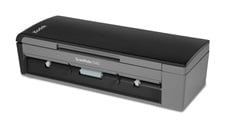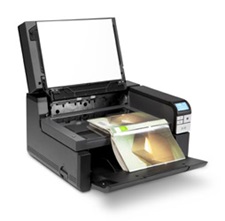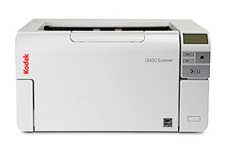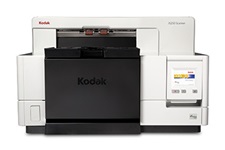In another article this month, we have already touched on reasons to include BPA (Business Process...
A scanner for every bubble
With the steady return to normal, albeit with some not insignificant changes from 5 months ago, most businesses find themselves looking at how operations might continue following either complete shutdown or a rapid migration to home working. Within this consideration of our new functional norm comes the ‘bubble’ concept, the approach to isolating distinct groups within a wider organisation in the hope of minimising disruption to the wider business if there was an infection incident. In order to achieve this, long established functional processes are having to be reviewed against their suitability within the new operational environment and the capture of documented content (invoices, orders, payroll, HR etc) is no exception – just because it worked previously does not mean it is still the right or best solution going forward. For consideration, here are a few suggestions to get the ideas rolling…
-

Kodak Alaris i940 -

Kodak Alaris i2900 -

Kodak Alaris i3400 -

Kodak Alaris i5250
The permanently relocated (to home): For some, there will never be a return to 5 days in the office. The rapid re-deployment of workers to a home space has proven for them that the journey is simply wasted time in a day and therefore desk space can be reallocated. The need to capture content becomes even more important when a workforce is distributed.
Paper! – For low, infrequent volumes, the humble mobile phone can be utilised using DocuWare’s PaperScan application. Did we mention it is FREE to anyone. Download for Android | Download for iOS . For more regular or specialist physical capture where accurate imaging for automated processes (OCR, recognition, data extraction) is required, there are ultra-compact devices such as Kodak Alaris’s i900 series.
The workgroup (department) bubble: for those returning to an office space, there may be some differences in access to the core building and the environment they find themselves working within. For many larger spaces, sub-dividing access to equipment, meeting spaces and communal areas will require implementation.
Paper! – For departments previously sharing a central scanner resource but with a need to process a regular flow of paper content, larger desktop scanners such as the Kodak Alaris i2900 can be easily implemented to handle the workgroup’s scanning needs.
The centralised (company) resource: the other approach is to bring previously segmented / departmentalised services into one holistic process utilising central core services. By doing this, the issues of shared physical resources within an environment diminish with the added benefit of allowing a greater level of consistency in process across the business – task manager and workflows are a business’ new best friend
Paper! – For those companies with high volumes of paper, there are plenty of high speed, high accuracy, high reliability devices on the market these days such as the Kodak Alaris 3000 – 5000 series. A central resource / team takes responsibility for the preparation and submission of document capture for the entire company, however, these employees do not need to understand the content, merely focus on capture quality. Following the image submissions, automatic recognition processes utilise workflows with task assignments to route content to the required employees for review, submission, approval, rejection, payment etc.
What about already digital content?
Email is the business communication king and the ability for all teams to be able to share the content is key, however, just giving permissions to everyone’s mailbox is not ideal. Automated email capture (from a specific mailbox / mail folder) or integrated mail client tools to capture specific content to a central repository are just some of the tools available to regulate these submissions. Invu, DocuWare and PacSol’s own ImageView for IBM iSeries all have email integration tools.
However, content management platforms can also perform bulk import from network locations, allowing major suppliers to submit a daily batch of invoices or delivery notes. Perhaps a scanning bureau is engaged to process an large backlog of paperwork either built up during shutdown or historically stored only as paper – again the modern ECM platform can be configured to import this documentation. Then, those same recognition and routing processes used during scanning are utilised to ensure the right employee / department receive task notifications and can perform the required process related to these imported documents.
Hang on… should it matter what, where and how?
Good point!Regardless of how a piece of content enters a company’s digital workspace (electronic document management platform) or where an employee is physically located, the implementation of consistent, accurately identified and process managed documentation will benefit almost every business in today’s new normal. Now more than ever (not just because of various legislative measures such as GDPR) with a distributed workforce, having content centralised and accessible for the entire workforce is the real answer to maintaining good business performance. I’ll go into more detail about how task management and workflow can enhance your business processes however should you wish to discuss any aspect of your current document capture or management process, do not hesitate to get in contact directly or email via support@pacsol.co.uk to discuss the options.

Toby Gilbertson, Customer Services Manager. June 2020



